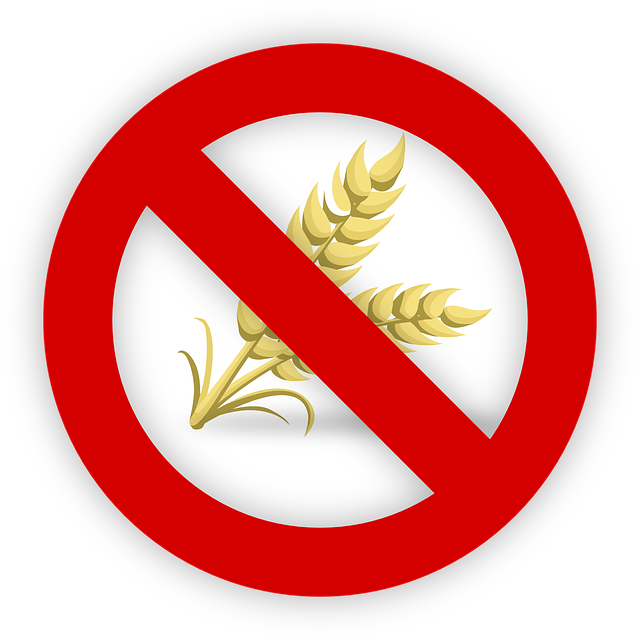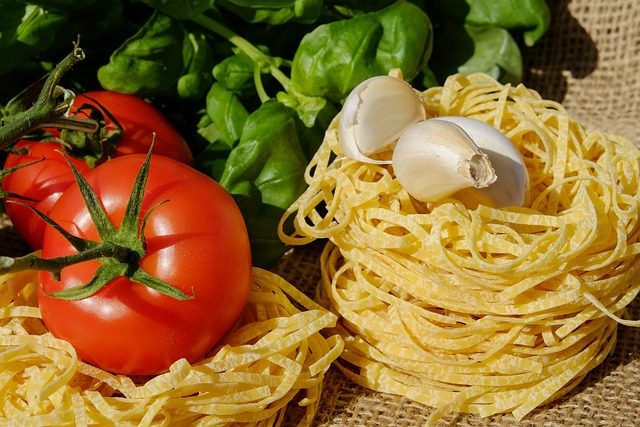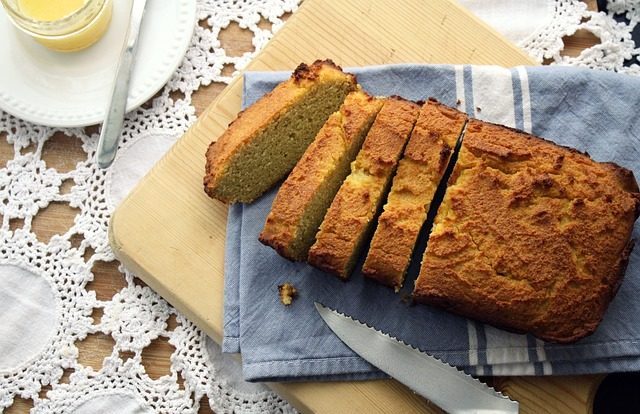Embracing a gluten-free lifestyle can be life-changing for individuals struggling with various health conditions. With the increasing availability of gluten-free products and a growing awareness of gluten-related disorders, adopting a gluten-free diet is more feasible than ever before. This comprehensive guide will empower you to master your gluten-free diet, providing valuable tips, essential information, and healthful benefits to ensure a seamless transition to a healthier, happier you.
Table of Contents
Key Takeaways
Understand the different types of gluten sensitivities and allergies.
Identify and avoid common sources of gluten with label reading, homemade alternatives, and buying in bulk.
Enjoy a balanced diet by incorporating naturally gluten free foods such as fruits, vegetables, lean proteins & dairy while navigating social situations & dining out safely.
Understanding Gluten-Free Diets

Individuals with the following conditions need a gluten-free diet:
Celiac disease
Non-celiac gluten sensitivity
Wheat allergy
Gluten ataxia
Understanding these conditions and the reasoning for a gluten-free lifestyle will enable better symptom management and improved overall health.
Celiac Disease
Celiac disease is an autoimmune disorder where consuming gluten leads to damage in the small intestine. Living with celiac disease means following a strict, gluten-free diet for life. There is no other treatment for this condition. Not managing this condition can lead to severe complications, such as osteoporosis, other autoimmune disorders, and certain types of cancer.
If symptoms continue even while adhering to a gluten-free diet, it’s necessary to seek advice from a doctor or registered dietitian experienced in celiac disease.
Non-Celiac Gluten Sensitivity
Non-celiac gluten sensitivity (NCGS) is an intolerance to gluten that produces symptoms similar to those of celiac disease but lacks specific diagnostic tests. Around 18 million Americans are believed to have NCGS. While there are no definitive laboratory tests to diagnose NCGS, a gluten-free diet may still provide relief from symptoms.
However, it’s not advisable to adopt a gluten-free diet without prior consultation with a healthcare professional who specializes in this field.
Wheat Allergy and Gluten Ataxia
Wheat allergy is an immunological condition where the body produces antibodies to wheat proteins, resulting in potentially serious anaphylactic reactions. Gluten ataxia, on the other hand, is an autoimmune disorder that involves the body’s immune system attacking the nervous system upon gluten ingestion.
Both conditions may also benefit from a gluten-free diet to reduce symptoms and prevent further damage.
Identifying and Avoiding Gluten-Containing Foods

Successfully adhering to a gluten-free diet involves identifying and avoiding foods that contain gluten, including common sources and hidden gluten in processed foods. Having knowledge of these sources will aid in making careful choices and maintaining a balanced, gluten-free diet.
Common Gluten Sources
Common sources of gluten include:
Wheat
Barley
Rye
Some oats
Oats are a gluten-free grain. However, they can become cross-contaminated with wheat, barley, or rye during production. To ensure the oats you consume are safe, look for oats and oat products labeled as gluten-free, as these have not been cross-contaminated.
However, keep in mind that some individuals with celiac disease may not tolerate even oats labeled as gluten-free.
Hidden Gluten in Processed Foods
Hidden gluten can be found in processed foods, sauces, and additives. Malt, made from barley, and hydrolyzed vegetable protein, often containing wheat, are examples of “stealth” gluten ingredients to be aware of.
Always read food labels carefully and look for terms such as wheat, barley, rye, Triticum vulgare, Triticale, Hordeum vulgare, and Secale cereale to ensure the product is gluten-free.
Reading Food Labels
Learning to read food labels is essential for ensuring safe and gluten-free choices. According to the U.S. Food and Drug Administration, foods with a “gluten-free” label must contain fewer than 20 parts per million of gluten. Be cautious of hidden or questionable ingredients that may contain gluten, such as malt vinegar, malt syrup, or malt flavoring.
Understanding food labels can help you make careful choices and prevent unintended gluten intake.
Embracing Gluten-Free Grains and Flours

Include gluten-free grains and flours in your diet for varied nutrition. These alternatives offer necessary nutrients enabling you to enjoy a wide selection of delicious foods without the risk of gluten exposure.
Gluten-Free Grains
Gluten-free grains, such as:
rice (labeled gluten free)
corn
quinoa
millet
These gluten free products are a great alternative to wheat gluten and other gluten containing grains for those following a gluten-free diet.
provide a variety of nutrients, including fiber, vitamins, minerals, and antioxidants. Including these grains in your diet can enhance your overall health and make following a gluten-free diet more enjoyable and satisfying.
Gluten-Free Flours
Gluten-free flours, such as almond, coconut, and rice flour, can be used for baking and cooking. These flours offer alternative options for those who need to avoid gluten while still enjoying the texture and taste of baked goods.
Experimentation with various gluten-free flours can introduce you to new flavors and textures in your preferred recipes.
Cooking and Baking Tips
Experiment with cooking and baking techniques to create delicious gluten-free dishes. Use alternative ingredients, such as:
xanthan gum
guar gum
ground seeds like psyllium or flax
gluten-free flours
to achieve the desired texture and taste in your recipes. Experimenting with new techniques and ingredients can lead to enjoyment of a diverse range of gluten-free meals without feeling constrained or left out.
Building a Balanced Gluten-Free Diet
A balanced gluten-free diet requires attention to nutrient intake, meal planning, and healthy snacking. Concentrating on these aspects will ensure that your gluten-free lifestyle is both satisfying and nutritionally well-rounded.
Nutrient Considerations
Be mindful of potential nutrient deficiencies, such as fiber, iron, and B vitamins, when following a gluten-free diet. Gluten-free food products are usually lower in protein and fiber in comparison with gluten-containing items. Additionally, they contain more saturated fat, sodium, and carbohydrates..
To maximize nutrient intake, concentrate on including a variety of naturally gluten-free foods like fruits, vegetables, lean proteins, and dairy in your diet.
Healthy Meal Planning
Plan meals to include a variety of naturally gluten-free foods, such as:
fruits
vegetables
lean proteins
dairy
This will not only help you maintain a balanced diet but also prevent boredom and ensure that you enjoy a wide range of delicious, nutrient-dense meals.
Don’t be afraid to experiment with new recipes and ingredients to keep your gluten-free diet interesting and satisfying.
Gluten-Free Snacking
Choose healthy gluten-free snacks, like fresh fruit, nuts, and rice cakes, to stay satisfied between meals. These snacks can provide essential nutrients and help you maintain a balanced gluten-free diet.
Incorporating a selection of gluten-free snacks into your daily routine ensures you meet your nutritional needs while still relishing tasty foods.
Navigating Social Situations and Dining Out
Successfully navigate social situations and dining out by communicating your needs, employing restaurant strategies, and preparing for travel and special occasions. With a little planning and awareness, you can enjoy a wide range of dining experiences without compromising your gluten-free lifestyle.
Communicating Your Needs
Clearly communicate your dietary restrictions to friends, family, and restaurant staff to ensure safe and enjoyable dining experiences. This can help prevent potential misunderstandings and ensure that your needs are met.
Being transparent about your dietary requirements allows you to enjoy social situations and dining out without the worry of unintentional gluten exposure.
Restaurant Strategies
Research restaurants in advance, ask questions about menu items, and consider bringing your own gluten-free alternatives when dining out. This will help you feel more confident and in control of your dining experience.
Employing these strategies lets you enjoy a diverse selection of tasty meals without deviating from your gluten-free lifestyle.
Travel and Special Occasions
Plan ahead for travel and special occasions by packing gluten-free snacks and researching local dining options. This will help you maintain your gluten-free diet while still enjoying the excitement of new experiences and celebrations.
Preparation and proactivity can help keep your gluten-free diet enjoyable and stress-free, even in unfamiliar environments.
Gluten-Free Substitutes for Favorite Foods
Discover gluten-free substitutes for your favorite foods, including bread, pasta, and cereals. Exploring these alternatives allows you to keep enjoying the foods you love while sticking to a gluten-free lifestyle.
Gluten-Free Bread Options
Gluten-free bread options are available in stores or can be made at home using alternative flours. Some popular store-bought gluten-free bread brands include Three Bakers, Canyon Bakehouse, and Franz Gluten Free.
By experimenting with different gluten-free flours, such as almond and rice flour, you can also create delicious homemade bread that meets your specific preferences and dietary requirements.
Gluten-Free Pasta Choices
Choose gluten-free pasta made from rice, corn, or quinoa for a satisfying alternative to wheat-based pasta. Popular gluten-free pasta brands include ZENB Pasta Variety, Lotus Foods, and Barilla.
By incorporating these gluten-free pasta options into your meals, you can continue to enjoy the comfort and satisfaction of pasta dishes without the worry of gluten exposure.
Gluten-Free Cereals and Snacks
Enjoy gluten-free cereals and snacks, such as rice cakes and corn chips, but always check labels for hidden gluten. Some popular gluten-free cereal brands include Annie’s Cinnamon Roll Cereal, General Mills Gluten-free Cheerios, and Rice Chex.
By exploring a variety of gluten-free cereals and snacks, you can satisfy your cravings while maintaining a gluten-free diet.
Alcohol and Gluten-Free Diets
Learn about alcohol options on a gluten-free diet, including gluten-free beer, wine, and liquor. With a little research, you can still enjoy a variety of alcoholic beverages without compromising your gluten-free lifestyle.
Gluten-Free Beer Options
Gluten-free beer options are available, made from alternative grains like sorghum or rice. Some popular gluten-free beer brands include Bierly Brewing, Ghostfish Brewing Company, and New Grist.
Exploring gluten-free beer options enables you to relish in a refreshing beverage without the risk of gluten exposure.
Wine, Liquor, and Other Beverages
Wine and most liquors are naturally gluten-free and safe for consumption on a gluten-free diet. Distilled liquors, such as:
vodka
bourbon
gin
rum
whiskey
are also deemed suitable for individuals with celiac disease.
Familiarizing yourself with a variety of gluten-free alcoholic beverage options lets you enjoy social events and celebrations without compromising your gluten-free lifestyle.
Saving Money on a Gluten-Free Diet
Save money on a gluten-free diet with budget-friendly shopping tips, homemade alternatives, and buying in bulk. Implementing these strategies enables you to maintain a gluten-free lifestyle without excessive spending.
Budget-Friendly Shopping Tips
Shop smart by focusing on fresh produce, buying in-season items, and comparing prices at different stores. Some cost-effective grocery stores for gluten-free food items include:
Costco
Trader Joe’s
Whole Foods
Aldi
Food Lion
Implementing budget-friendly shopping tips can help you save money while still savoring a wide variety of delicious gluten-free foods.
Homemade vs. Store-Bought
Save money by making your own gluten-free baked goods, snacks, and meals instead of relying on expensive store-bought options. Homemade gluten-free foods generally possess a higher nutritional value compared to store-bought options.
Creating your own gluten-free dishes ensures a healthier, more cost-effective lifestyle while eating gluten free.
Buying in Bulk
Purchase gluten-free grains, flours, and other staples in bulk to reduce costs and ensure a well-stocked pantry. Buying in bulk can provide up to 50% savings on certain items.
Stocking up on gluten-free staples helps maintain a balanced diet while saving money over time.
Check out The Gluten-Free Diet: A Beginner’s Guide with Meal Plan.
Summary
In summary, mastering a gluten-free diet requires understanding the reasons behind adopting this lifestyle, identifying and avoiding gluten-containing foods, incorporating gluten-free grains and flours, building a balanced diet, navigating social situations and dining out, discovering gluten-free substitutes for favorite foods, considering alcohol options, and saving money with smart shopping strategies. By following the tips and information provided in this comprehensive guide, you can successfully embrace a gluten-free lifestyle and enjoy improved health and well-being.
Frequently Asked Questions
What can you eat on a no gluten diet?
A no gluten diet includes many nutritious options such as fruits, vegetables, meat, eggs, amaranth, arrowroot, buckwheat, cornmeal, grits, polenta, flax, gluten-free flours, hominy, and millet. Additionally, processed gluten-free foods such as bread and pasta are available.
What foods are high in gluten?
Common sources of gluten include bread, pasta, pizza dough, cereal, and cakes. Additionally, many processed foods contain gluten such as deli meats, sauces, dressings, and seasonings.
What are the first signs of being gluten intolerant?
Common signs of being gluten intolerant include abdominal pain, bloating, diarrhea, constipation, headache, fatigue, and joint pain.
What is surprisingly not gluten-free?
Surprisingly, foods such as wheat, barley, rye, and spelt are not gluten-free. These grains contain the protein gluten, which can trigger adverse reactions in those who are intolerant.
What health conditions require a gluten-free diet?
People with celiac disease, non-celiac gluten sensitivity, wheat allergy, and gluten ataxia must adhere to a gluten-free diet in order to manage their health conditions.









